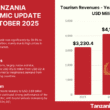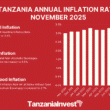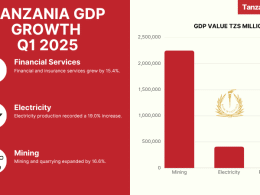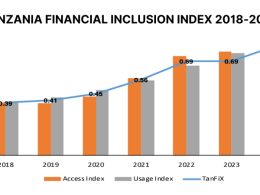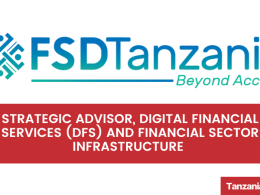The Financial Sector Deepening Trust (FSDT) recently issued its FinScope Tanzania 2023 Report, a comprehensive financial sector demand-side survey of Tanzanian adults.
The survey has five main objectives:
- To understand the behaviour (cash flow management, investing, saving etc.) and define the financial service needs of consumers (individuals, farmers, business owners);
- To establish credible benchmarks and measure the effectiveness of financial inclusion and progress made towards national targets under the National Financial Inclusion Framework (NFIF), the National Financial Sector Development Mater Plan (FSDMP), as well as other national development plans;
- To provide insights into policy, regulatory and market obstacles to access and usage of financial services;
- To provide insights which will feed into innovation within the financial and real economic sectors;
- To highlight opportunities for policy review needed to drive the financial sector development.
This is the fifth FinScope Tanzania report with previous issues in 2006, 2009, 2013 and 2017.
The survey was conducted from March to April 2023 by the National Bureau of Statistics who interviewed 9,915 Tanzanian adults aged 16 years and above.
The results provide critical insights into financial access, usage, barriers, and opportunities across product categories including banking, mobile money, credit, savings, insurance, and more.
Key Findings
Formal Financial Inclusion
- Formal financial inclusion stands at 76% of adults in 2023, a significant 11% point increase from 65% in 2017.
- Mobile money services have driven much of this growth, with uptake rising from 60% to 72% of adults. Nearly 1 in 4 Tanzanians have opened their first mobile money account since 2017.
- Banking services usage also grew from 17% to 22% between 2017 and 2023. But growth slowed in the past two years following initial gains from 2017-2020.
- The usage of other formal non-bank financial services like microfinance, Savings and Credit Co-Operative Societies (SACCOs), and remittance companies has remained largely unchanged.
Financial Service Usage
- Mobile money dominates daily financial transactions. Nearly all (99%) active mobile money users have used the service in the past 90 days.
- Bank account usage is less frequent, with 57% of banked consumers using their accounts in the past 90 days.
- Cash remains king for daily expenses like groceries, utilities, and transportation. Over 90% of Tanzanian adults rely on cash for these payments.
- Just 13% have used mobile money to make merchant payments in the past month, indicating limited adoption of digital payment capabilities.
- Remittances via mobile money are the most common financial transaction – 55% of adults sent or received money in the past year.
- But usage of other financial products is low – only 15% have an outstanding loan and 17% save with a formal financial institution.
Financial Exclusion
- Financial exclusion dropped from 28% in 2017 to 19% in 2023. But 6.3 million Tanzanian adults remain fully excluded.
- Women, youth under 25, dependents, and rural dwellers have the highest exclusion levels, between 40-80% excluded.
- Geographically, regions like Singida, Tabora, and Pemba have exclusion levels above 40% of adults.
Barriers to Uptake and Usage
- Income barriers dominate – 62% of financially excluded adults say they do not have enough regular income to use formal financial services.
- Lack of full Know Your Client (KYC) documentation is also a barrier. 57% of excluded adults do not have a National Identification Number (NIN), voter card, passport, or driver’s license.
- Among mobile money non-users, 86% say they do not need or have too few transactions to justify using the service.
- 1 in 4 banked consumers cites maintaining minimum account balances as a key barrier to ongoing usage.
Opportunities in Insurance and Investments
- Insurance uptake declined from 15% in 2017 to 10% in 2023, driven by falling health insurance coverage.
- Just 3% of adults have invested in formal channels like pension funds, securities, and unit trusts. But awareness is higher at around 30% for most products.
- This points to the untapped potential to boost uptake through financial education and promoting use cases.
Conclusion
While Tanzania has made commendable strides in expanding financial access and reducing exclusion, significant work remains to drive usage, address persistent inequalities, and meet diverse consumer financial needs.
Harnessing technology and innovation will be key to reaching the last mile. But products must become more affordable and responsive to lifecycle realities to maximize welfare and unlock the full promise of financial inclusion.
About FSDT Tanzania
Established in 2004, FSDT is a donor-funded financial sector market facilitator that aims to achieve poverty reduction through a transformative financial sector that offers quality, inclusive and sustainable financial solutions to improve the livelihood, well-being, and empowerment of underserved Tanzanians.
FSDT has undergone four strategic phases that have provided valuable contributions to the financial sector in Tanzania. Following the market entry phase (2004-2006), FSDT’s primary focus was on micro financing (2006-2012).
From 2013-2015, projects and initiatives were introduced that focused on overcoming fundamental access barriers to financial service provision.
In the recently completed strategic period (2016-2021), the emphasis shifted to driving the uptake and usage of formal financial services. This shift was in alignment with the direction of the National Financial Inclusion Framework 2018-2022 (NFIF II).

